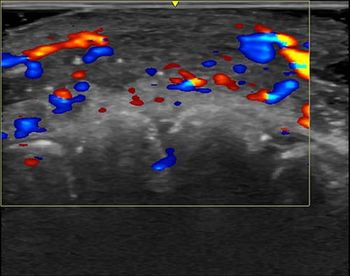
Philips releases upgrade package for radiology and echo platforms
Philips has released a package of enhancements and new system configurations for its ultrasound portfolio. The upgrades, known collectively as Vision 2005, include new capabilities for the company’s latest radiology and cardiology platforms.
Philips has released a package of enhancements and new system configurations for its ultrasound portfolio. The upgrades, known collectively as Vision 2005, include new capabilities for the company's latest radiology and cardiology platforms.
Highlights include new pediatric cardiology capabilities and enhanced vascular capabilities on the iE33 (cardiology) system, cardiology capabilities and photo-quality 3D fetal imaging on the iU22 (radiology) system, and oncart and offcart upgrades to QLAB Quantification Software on both platforms.
Philips' iE33 (intelligent echo) system and iU22 (intelligent ultrasound) system support traditional 2D as well as 3D and 4D visualization. They use advanced transducer technology (xMATRIX), crystals (PureWave), user-centered ergonomics, and volumetric quantification. Several enhancements build on these core technologies.
On the iE33, 3DQ Advanced software is used to measure the contractility of the heart to help determine which patients are the best candidates for cardiac resynchronization therapy (CRT). Vision 2005 introduces 3D synchronicity indices that can quantify cardiac dyssynchrony and, thereby, standardize 3D evaluation for CRT. The pediatric cardiology package includes a new multiplanar transesophegeal echo transducer optimized for use during pediatric surgery.
On the iU22, Vision 2005 provides faster volume rates and better 4D image quality by incorporating Philips' SonoCT compound imaging. The X3-1 xMATRIX array transducer enables real-time volume-rendered imaging for general viewing as well as cardiac applications. Other enhancements include the ability to measure intima media thickness, an indicator of early atherosclerosis.
The 3D Viewer allows the review and display of 3D data sets and multiplanar reconstructions similar to those used in MR and CT. Analysis tools allow the review of contrast loops and creation of microvascular imaging files that visualize blood flow in extremely small vessels. Cardiac quantification of 3D data sets and strain quantification are also available.
Newsletter
Stay at the forefront of radiology with the Diagnostic Imaging newsletter, delivering the latest news, clinical insights, and imaging advancements for today’s radiologists.




























